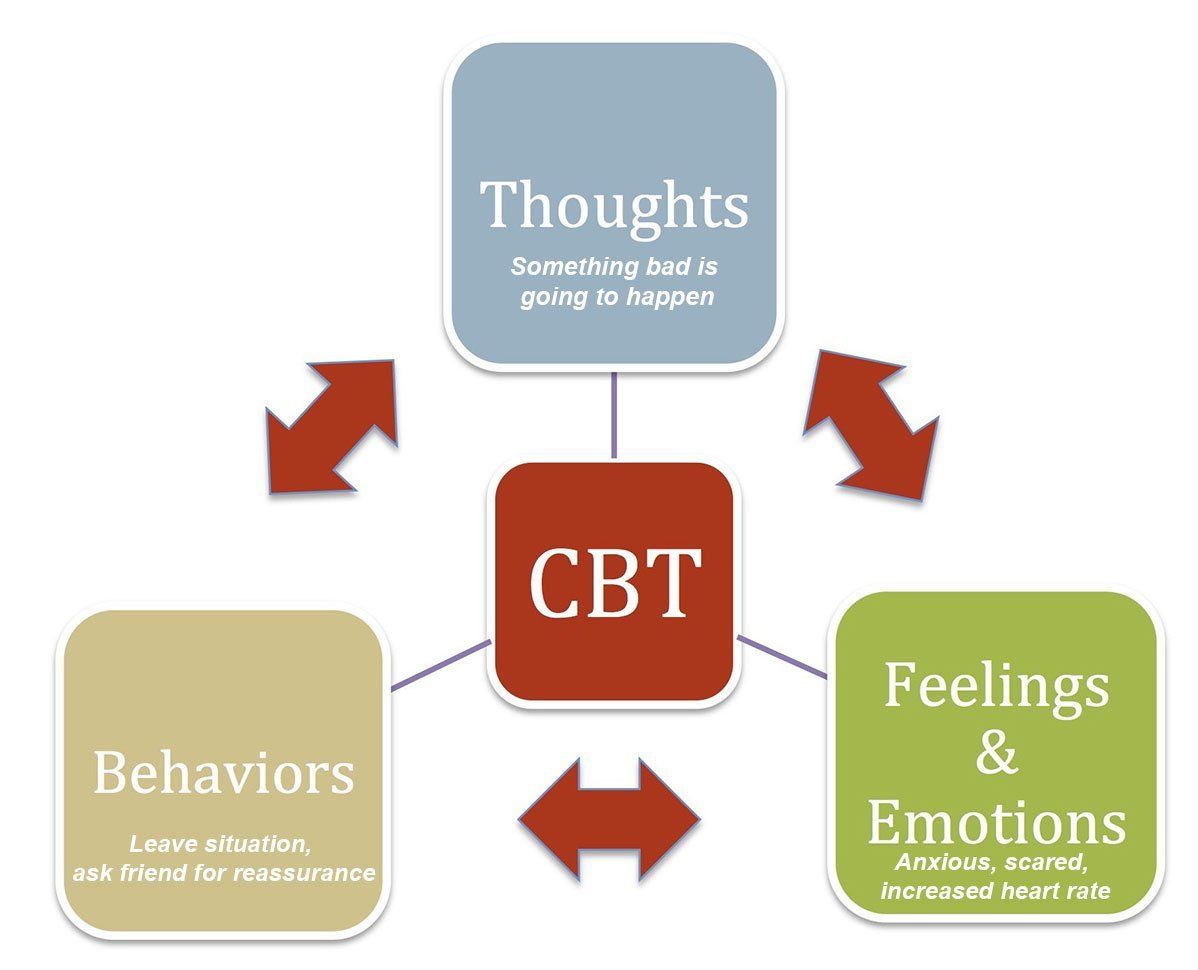CBT for Anxiety & Avoidance
Frequent feelings of anxiety are challenging emotions to live with. These feelings can lead to significant impairment in one's quality of life and are one of the most common problems that lead a person to seek help.
Cognitive Behavioral Treatment of anxiety understands anxiety as a problem of vulnerability and helplessness. An anxious person feels vulnerable to risk and helpless to do anything about it. As long as they continue to believe they are vulnerable to risk and helpless to do anything about it they will continue to feel anxious.
A person struggling with anxiety tends to have two themes in their patterns of thinking:
- An overestimation of the risk of something bad happening; and
- An underestimation of ability to cope with something bad happening
The combination of these two patterns of thought lead to an increase in the emotion of anxiety and possibly physiological sensations. Read more about the basic components of Cognitive Behavioral Therapy.
The goal of the anxious person is usually to find a way to quickly reduce their anxiety. This leads to the development of two patterns of behavior:
- Avoidance Behaviors: Avoidance of any situation that may trigger anxious thoughts and feelings (for example, avoidance of bridges).
- Safety Behaviors: Safeguards that a person puts in place that they come to believe protect them from anxious thoughts and feelings (for example, only being willing to go over a bridge if they are holding their breath).
These avoidance and safety behaviors tend to reduce the anxiety in the short term but hold no benefit in the long-term. In fact, using avoidance or safety behaviors typically maintain the anxiety and make it less likely that there will be a reduction in the anxiety. This is because when you 'act' as if your anxious thoughts are true you are more likely to continue to think them and believe they are true.
CBT treatment for anxiety involves two general phases:
- Cognitive Restructuring: Learn how to identify anxious thoughts and examine their accuracy and helpfulness. You will gain insight into the way you think and may explore deeper, underlying patterns of thought that were developed throughout your life. Your therapist will guide you to learn the skills of what to do when you notice an anxious thought popping in your mind. This phase in treatment can reduce intensity of anxiety and make it easier to move on to the next phase in treatment.
- Exposure Therapy: Using cognitive restructuring skills, you will make a concrete, hierarchical plan to face the fears you have by eliminating avoidance and safety behaviors. For example, if you have a fear of cats you may work with your therapist to develop a plan that involves you looking at pictures of cats, watching videos of cats, looking at cats through a glass partition and eventually petting a cat. Your therapist will collaborate with you and move at a pace that you are in agreement with. Exposure therapy strategies have some of the highest measures of success in all therapeutic approaches.
These two phases of treatment are both geared towards shifting overestimation of risk and underestimation of ability to cope. Once a person has a more accurate assessment of risk and ability to cope their anxiety tends to improve.
Common Anxiety Disorders Include:
- Panic Disorder – Having panic attacks and fears about the possibility of having a panic attack.
- Agoraphobia – Fear of being in public places where it would be hard or embarrassing to leave - this often results in not wanting to leave home.
- Generalized Anxiety – More general worries that tend to me situationally based.
- Separation Anxiety – Fears related to being away from loved ones.
- Social Phobia - Fears related to what other people may think of you.
- Specific Phobias – Fears of something specific such as heights, dogs, or bugs.
- Adjustment Disorders – Anxiety created by life changes that become difficult to adapt to.

